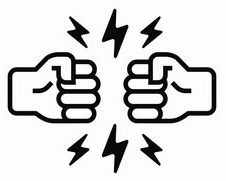What is hereditary neuropathy?
What is hereditary neuropathy?
Hereditary neuropathy with pressure palsies (HNPP) is an inherited condition that causes numbness, tingling and muscle weakness in the limbs. It affects the peripheral nerves, which connect your brain and spinal cord to your muscles and cells that detect touch, pain and temperature. HNPP can affect anyone.
What is CMT Type 1A?
Charcot-Marie-Tooth disease type 1A (CMT1A) is a type of inherited neurological disorder that affects the peripheral nerves. People with this disease experience weakness and wasting (atrophy) of the muscles of the lower legs beginning in adolescence; later they can also have hand weakness and sensory loss.
Is CMT a polyneuropathy?
Charcot-Marie-Tooth (CMT) hereditary neuropathy refers to a group of disorders characterized by a chronic motor and sensory polyneuropathy, also known as hereditary motor and sensory neuropathy (HMSN).
What is hereditary motor sensory neuropathy?
What is Hereditary Motor Sensory Neuropathy? Hereditary motor sensory neuropathy (HMSN), also known as Charcot-Marie-Tooth Disease, is an inherited, progressive disease of the nerves with weakness and numbness more pronounced in the legs than the arms. Parts of the nerve cells deteriorate.
What are the stages of neuropathy?
Stages of Neuropathy
- Stage One: Numbness & Pain.
- Stage Two: Constant Pain.
- Stage Three: Intense Pain.
- Stage Four: Complete Numbness/ Loss of Sensation.
Which condition is the most common cause of neuropathy in developed countries?
Diabetes mellitus (DM) is the most common cause of peripheral neuropathy in developed countries and is associated with several different types of polyneuropathy including distal symmetric sensory or sensorimotor polyneuropathy, autonomic neuropathy, diabetic neuropathic cachexia, polyradiculoneuropathies, cranial …
What is Charcot-Marie-Tooth type 2?
CHARCOT-MARIE-TOOTH disease (CMT) type 2 or hereditary motor and sensory neuropathy type 2 is a genetically heterogeneous group of axonal neuropathies with motor and sensory abnormalities and signs of axonal degeneration on electrodiagnostic investigation and in sural nerve biopsy specimens.
Is there a cure for hereditary neuropathy?
There are no standard treatments for hereditary neuropathies. Treatment is mainly symptomatic and supportive. Medical treatment includes physical therapy and if needed, pain medication. Orthopedic surgery may be needed to correct severe foot or other skeletal deformities.
What is dejerine Sottas disease?
Dejerine-Sottas Disease (DS) – DS is also known as CMT type 3 and is an inherited peripheral neuropathy with an onset in infancy. The disorder is caused by a defect in one of the genes for myelin and is marked by severe, progressive weakness and sensory loss.
What are the five stages of neuropathy?
Let’s take a look at the five stages of peripheral neuropathy and how you can recognize each.
- Stage One: Numbness and Pain.
- Stage Two: More Regular Symptoms.
- Stage Three: The Pain Reaches Its High Point.
- Stage Four: Constant Numbness.
- Stage Five: Total Loss of Feeling.
Is peripheral neuropathy inherited?
Disorders of peripheral nerves are frequently inherited. Common inherited peripheral neuropathies include Charcot-Marie-Tooth Disease (CMT), also known as Hereditary Motor and Sensory Neuropathy, Dejerine-Sottas Disease and Friedreich’s Ataxia.
What causes sensory neuropathy?
Untreated diabetes and obesity are major causes of sensorimotor neuropathy, which may lead to chronic leg ulcers and other skin conditions.
What is sensory motor neuropathy?
The term “sensorimotor neuropathy” refers to a peripheral neuropathy that damages the motor nerves, which control muscles, and the sensory nerves, which carry touch, temperature, pain and pressure information from the body to the brain. Sensorimotor neuropathy can be caused by infection with inflammation,…
